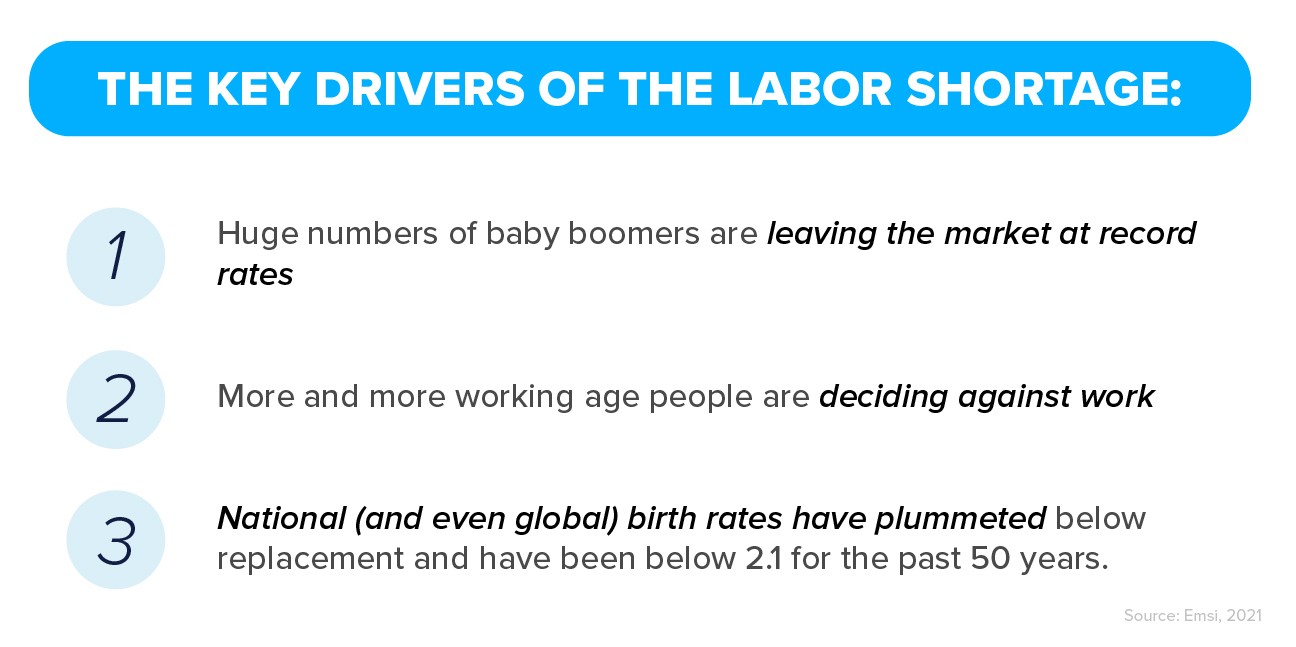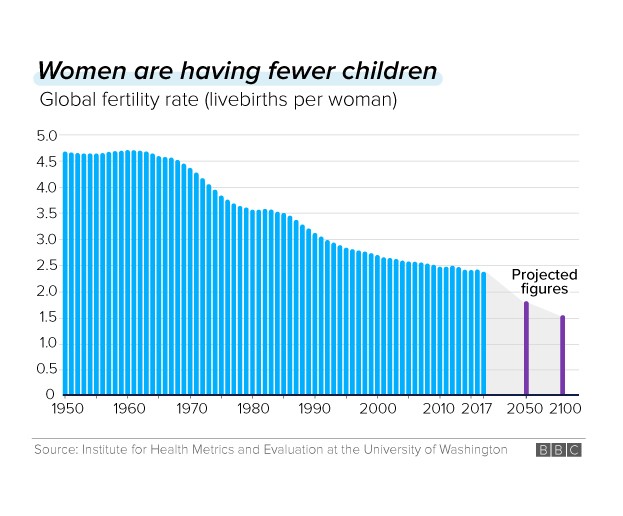Way back in 2018, Korn Ferry predicted that by 2030 there would be a global talent shortage that would result in more than 85 million jobs going unfilled. Rarely do such big-picture predictions come true. But in this case, with 2030 only eight short years away, Korn Ferry’s prediction might actually be a little conservative.
How so? Because there are simply not enough people to fill these jobs.
The events of the past two years have accelerated the people shortage in ways that Korn Ferry could have never expected. Manpower now reports that talent shortages are at a 15-year high, with nearly 70% of employers reporting difficulty filling vacancies. Operations, logistics, manufacturing, sales, marketing, IT, data, and admin are the hardest positions to fill–and worrisomely, many of these roles comprise the bedrock of our consumer supply chains. The people who work in these areas are now warning of a system collapse because of heavy regulation and just not enough people for the incredible amount of work that needs to be done.
Earlier this year, Emsi researchers found that an ongoing demographic downturn, coupled with Covid-related policies, joined forces to push the gas pedal down on domestic labor shortages. Eventually, the Coronavirus measures will likely fade. But the long-term shortages and unprecedented labor market shifts will not. That’s because, unlike various pandemic response measures, the drivers of these trends aren’t going anywhere.


What does this mean? For companies, colleges, and cities, it means there are few issues more important than the “people” equation. How to find enough people equipped to do the work that needs to be done is the problem facing institutions across the public and private sector alike. How do you get talent, keep talent, and grow talent ? Failure to do so will result in decreased business productivity and profitability, college closures, and reduced services in cities that struggle to grow and retain their people base.
The importance of finding and connecting with people
So, if your company constantly struggles to fill too many open seats or your college recruiting efforts feel like casting a hook in an overfished pond, what can you do? If your current strategies and techniques keep coming up short, what options do you have? The status quo is getting you nowhere, and all the data indicates that the problem is about to get much worse.
So, we need to turn our attention to the strategies that we can use when we live in a world with too few people for all the seats that need to be filled. That’s where we need to stress two key concepts–concepts that everyone needs to start acting on yesterday:
- Build your employer or college recruiting brand early, and
- Repeat it often.
When talent is scarce, you need to get to them early, and you need to stay in constant communication. There is no offseason for recruiting. There is no offseason for making sure that talent is aware of you.
What do we mean by early?
For businesses, early means building relationships while students are still in high school or college. This is because 70% of early talent decide on their future employer in high school or early college (46% in high school and 24% by second year of college), and nearly three out of every four early talent job seekers would be more inclined to work for an employer if they connected with them prior to beginning their job search. If young talent isn’t thinking of your company–or isn’t even aware of your company–while they are still quite young, you are going to face a very uphill and expensive battle for talent once they hit the labor market. And unless you work for Netflix, Apple, Google, or other consumer brands that high school and college-age people recognize, establishing that brand is going to take work.

For colleges, early means opening conversations while students are still freshman or sophomores in high school. Some 93% of them say that they would be more likely to apply to your college if you built a relationship with them while they were in the 9th or 10th grade.
And what do we mean by often?
Why do companies like Geico, Pepsi, and Toyota advertise so much? Do they just want to throw money away? Well, no. They know that keeping their brands in front of you while you watch TV, drive through town, and read articles or watch videos online is key to keeping their sales up. There is a relationship between how much you see them and how much you buy from them. They are essentially telling you, “We want your business.”
Today companies and colleges need to be letting a new and young generation of talent know, “We want you!”
And isn’t that the thing that people want to hear these days? If your company is desperate to find good people and if your college is not sure how it will hit those enrollment goals, one of the first and best messages that you can send out is that you are open and ready for business. That you are a good place to work or a college that is eager and ready to help you take the next step toward a better life. If you have great opportunities, it is time to let a new generation of talent know about it.
Ready to get started? Request a demo.




